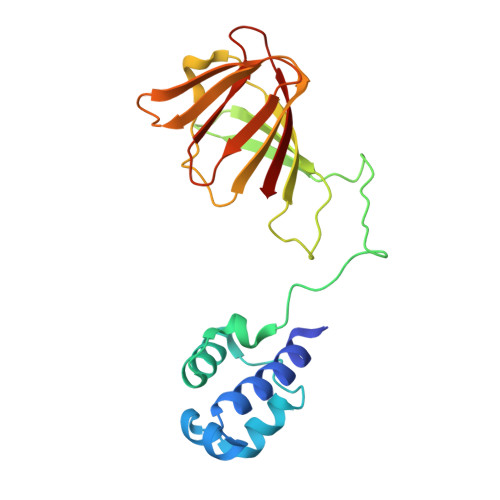Mechanistic studies of an unprecedented enzyme-catalysed 1,2-phosphono-migration reaction.
Chang, W.C., Dey, M., Liu, P., Mansoorabadi, S.O., Moon, S.J., Zhao, Z.K., Drennan, C.L., Liu, H.W.(2013) Nature 496: 114-118
- PubMed: 23552950
- DOI: https://doi.org/10.1038/nature11998
- Primary Citation of Related Structures:
4J1W, 4J1X - PubMed Abstract:
(S)-2-hydroxypropylphosphonate ((S)-2-HPP) epoxidase (HppE) is a mononuclear non-haem-iron-dependent enzyme responsible for the final step in the biosynthesis of the clinically useful antibiotic fosfomycin. Enzymes of this class typically catalyse oxygenation reactions that proceed via the formation of substrate radical intermediates. By contrast, HppE catalyses an unusual dehydrogenation reaction while converting the secondary alcohol of (S)-2-HPP to the epoxide ring of fosfomycin. Here we show that HppE also catalyses a biologically unprecedented 1,2-phosphono migration with the alternative substrate (R)-1-HPP. This transformation probably involves an intermediary carbocation, based on observations with additional substrate analogues, such as (1R)-1-hydroxyl-2-aminopropylphosphonate, and model reactions for both radical- and carbocation-mediated migration. The ability of HppE to catalyse distinct reactions depending on the regio- and stereochemical properties of the substrate is given a structural basis using X-ray crystallography. These results provide compelling evidence for the formation of a substrate-derived cation intermediate in the catalytic cycle of a mononuclear non-haem-iron-dependent enzyme. The underlying chemistry of this unusual phosphono migration may represent a new paradigm for the in vivo construction of phosphonate-containing natural products that can be exploited for the preparation of new phosphonate derivatives.
- Department of Chemistry and Biochemistry, University of Texas at Austin, Austin, Texas 78712, USA.
Organizational Affiliation:



















